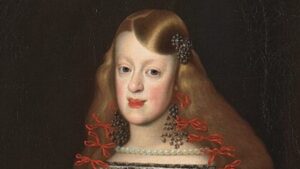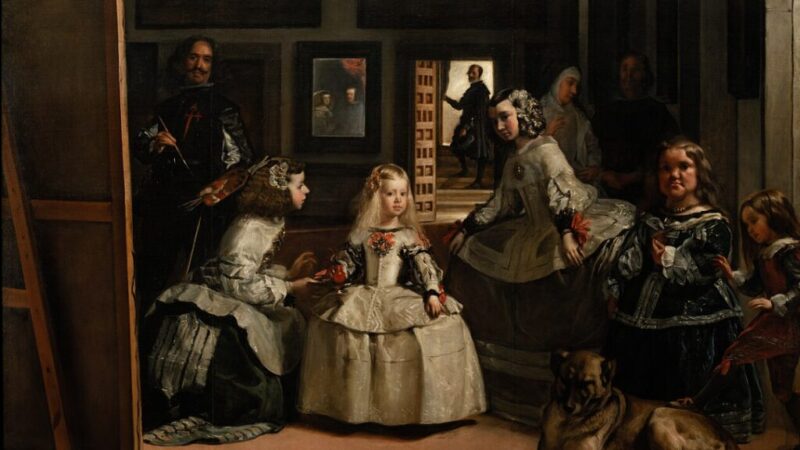Velázquez’s Las Meninas immortalized Infanta Margarita Teresa as the hope of Spain. Yet behind the delicate portrait lay a fragile reality: a young princess bound by dynastic blood and fated for a short, tragic life.
A Princess at the Center of a Masterpiece
In Diego Velázquez’s 1656 masterpiece Las Meninas, the young Infanta Margarita Teresa stands at the center of the canvas. Surrounded by maids of honor, courtiers, and even the painter himself, she embodies both the beauty and the burden of the Spanish Habsburg dynasty.
The painting, often seen as a celebration of royal splendor, also carries a shadow: Margarita was more than a child—she was the fragile hope of a dynasty bound by blood.
Born of a Fragile Line
Margarita was the daughter of King Philip IV of Spain and his niece, Mariana of Austria. Her very birth reflected generations of dynastic inbreeding, which had already brought stillbirths, disabilities, and premature deaths to the family.
By the time of Las Meninas, her brother Baltasar Carlos was dead, and her elder sister María Teresa was betrothed to Louis XIV of France. For a time, Margarita seemed the only heir left to Spain.
A Marriage that Tightened the Bloodline

Leopold I (Source:Wikimedia Commons Public Domain)
In 1666, at just fifteen, Margarita married her uncle, Leopold I of Austria. The union strengthened ties between the Spanish and Austrian Habsburgs—but at the cost of further narrowing the bloodline.
She bore several children, but most died young. In 1673, at the age of twenty-one, Margarita herself died in childbirth. Only one daughter, Maria Antonia, survived—but she too was frail and left no male heir.
The Shadow of Extinction
Margarita’s death was not only a family tragedy—it was a warning of dynastic collapse. Her younger brother, Charles II, inherited the throne, but his severe health problems and childlessness sealed the fate of the Spanish Habsburgs.
Seen in this light, Las Meninas is more than a portrait of courtly life. With the king and queen reflected in a distant mirror, and the fragile princess at its center, the painting foreshadowed the end of a dynasty.
A Life Too Short, A Symbol Too Heavy

Margaret Theresa (Source:Wikimedia Commons Public Domain)
Margarita Teresa never wore the crown. Instead, she became a symbol of both hope and the limits of dynastic ambition.
Her fate reminds us that even within the most splendid courts, beneath jewels and silks, bloodlines carried fragility. The girl immortalized in Las Meninas was not only a princess of her age, but also the silent herald of her dynasty’s fall.
References
- Kamen, Henry. *Spain, 1469–1714: A Society of Conflict*. Pearson Education, 2005.
- Alvarez, Gonzalo, et al. “The Role of Inbreeding in the Extinction of a European Royal Dynasty.” *PLoS ONE* 4, no. 4 (2009): e5174.
- Brown, Jonathan. *Velázquez: Painter and Courtier*. Yale University Press, 1986.
- Primary sources: Diego Velázquez, *Las Meninas* (1656); contemporary accounts of the Spanish court.
- Biblioteca Nacional de España (Spanish National Library, digital archives




